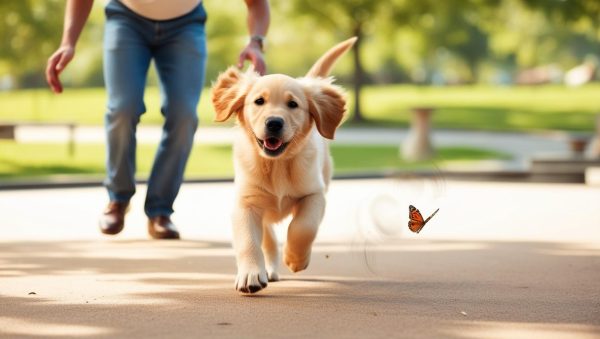
Best Techniques to Train a Stubborn Puppy at Home
Introduction
Bringing a new puppy into your home is an exciting experience, but it can also be challenging, especially if you find yourself with a stubborn little furball. Stubborn puppies can test your patience, but with the right techniques and a consistent approach, you can successfully train your pup and establish a strong bond. In this comprehensive guide, we’ll explore the best methods for training a stubborn puppy at home, including positive reinforcement, setting boundaries, and understanding your puppy’s unique needs.
Understanding Stubborn Puppy Behavior
Before diving into training techniques, it’s essential to understand why puppies exhibit stubborn behavior. Puppies are not inherently disobedient or willful; they simply haven’t learned the rules and expectations of their new environment yet. Some common reasons for stubborn puppy behavior include:
Lack of Consistency
Inconsistent training and mixed messages can confuse puppies, leading to stubborn behavior. If multiple family members use different commands or have varying expectations, your puppy may struggle to understand what is being asked of them.
Incomplete Socialization
Puppies who haven’t been properly socialized may be fearful or anxious in new situations, which can manifest as stubborn behavior. Lack of exposure to diverse people, animals, and environments during the critical socialization window (between 3 and 16 weeks old) can contribute to a puppy’s insecurity and reluctance to comply with training.
Breed-Specific Traits
Some dog breeds are known for their independent or strong-willed nature, which can be mistaken for stubbornness. Breeds like Siberian Huskies, Shiba Inus, and Jack Russell Terriers have been bred for specific tasks that require them to think independently, so they may not always be as eager to please as other breeds. Understanding your puppy’s breed characteristics can help you tailor your training approach.
Lack of Mental and Physical Stimulation
A bored or under-exercised puppy is more likely to engage in stubborn or destructive behavior. Puppies need plenty of age-appropriate physical exercise and mental enrichment to keep them happy and well-behaved. Without proper outlets for their energy, they may become uncooperative or find their own ways to entertain themselves, often through undesirable behaviors.
Positive Reinforcement Training
The most effective way to train a stubborn puppy is through positive reinforcement. This means rewarding your puppy for good behavior and ignoring or redirecting unwanted actions. By focusing on what your puppy does right and making training a fun, rewarding experience, you’ll encourage them to repeat desired behaviors and strengthen your bond in the process.
Reward-Based Training
Whenever your puppy follows a command, offer immediate praise and a high-value treat. Timing is crucial – reward your puppy within seconds of the desired behavior so they make the connection between their action and the positive outcome. Gradually phase out treats and replace them with praise, petting, or play as your puppy masters each skill.
Clicker Training
Clicker training is a form of positive reinforcement that uses a small device to make a clicking sound to mark the precise moment your puppy performs a desired behavior. The click is always followed by a treat, so your puppy learns to associate the sound with a reward. Clicker training is especially useful for teaching complex behaviors or shaping new skills in stubborn puppies.
Shaping Behavior
Shaping involves breaking a complex behavior into smaller, more manageable steps and rewarding your puppy for each incremental progress. For example, if you’re teaching your puppy to lie down, you might start by rewarding them for lowering their head, then for bending their elbows, and finally for fully lying down. By setting your puppy up for success and celebrating each small victory, you’ll build their confidence and make training feel achievable, even for the most stubborn pups.
Establishing Boundaries and Consistency
Stubborn puppies thrive on structure and consistency. By setting clear boundaries and sticking to a predictable routine, you’ll help your puppy understand what is expected of them and reduce the likelihood of stubborn behavior.
House Rules
Decide on a set of house rules and make sure all family members are on the same page. Will your puppy be allowed on the furniture? Are certain rooms off-limits? Be consistent in enforcing these rules and use positive reinforcement to reward your puppy when they make good choices.
Consistent Commands
Choose simple, one-word commands for each behavior you want to teach your puppy and use them consistently. For example, use “sit” instead of “sit down” or “can you please sit?” Avoid using multiple commands for the same behavior, as this can confuse your puppy and lead to stubborn responses.
Predictable Routine
Puppies thrive on routine, so establish a consistent daily schedule for feeding, potty breaks, playtime, and training sessions. A predictable routine helps your puppy feel secure and reduces anxiety, which can contribute to stubborn behavior.
Managing Your Puppy’s Environment
Set your stubborn puppy up for success by managing their environment and limiting opportunities for unwanted behavior. By controlling your puppy’s access to certain areas and providing plenty of appropriate outlets for their energy, you’ll prevent bad habits from forming and make training easier.
Puppy-Proofing
Puppy-proof your home by removing or securing any items that your puppy might chew, swallow, or destroy. Keep clothing, shoes, and other tempting objects out of reach, and provide plenty of safe, puppy-appropriate toys for your little one to play with instead.
Confinement and Supervision
When you can’t actively supervise your puppy, use a crate, playpen, or gated area to keep them safe and prevent unwanted behaviors. Gradually increase your puppy’s freedom as they learn the rules and demonstrate good behavior. Always supervise your puppy when they have access to the full house to prevent accidents and catch any stubborn behavior early on.
Plenty of Exercise and Enrichment
A tired puppy is a well-behaved puppy. Make sure your stubborn pup gets plenty of age-appropriate physical exercise through walks, playtime, and interactive toys. Mental stimulation is equally important, so engage your puppy’s mind with puzzle feeders, training games, and nose work activities. A puppy who is mentally and physically fulfilled is less likely to engage in stubborn or destructive behavior.
Addressing Common Stubborn Behaviors
Even with the best training and management strategies, stubborn puppies may still exhibit challenging behaviors from time to time. Here are some common stubborn puppy behaviors and how to address them:
Not Coming When Called
Recall is one of the most important skills for your puppy to learn, but it can also be one of the most challenging, especially for stubborn pups. Start training recall in low-distraction environments, like your living room, and gradually increase the difficulty as your puppy progresses. Use high-value treats and make coming to you the most exciting thing in your puppy’s world. If your puppy doesn’t respond when called, avoid chasing them or repeating the command. Instead, run in the opposite direction or make exciting noises to encourage them to follow you.
Pulling on the Leash
Stubborn puppies often pull on the leash, making walks a frustrating experience. To discourage pulling, stop moving forward whenever your puppy pulls and wait for them to return to your side. Use positive reinforcement to reward your puppy for walking calmly beside you, and consider using a front-clip harness or head halter for extra control. Consistency is key – never allow your puppy to pull you towards something they want, as this will only reinforce the behavior.
Chewing and Destructive Behavior
Chewing is a natural behavior for puppies, but it can become destructive if not properly managed. Provide your puppy with plenty of appropriate chew toys and rotate them regularly to keep things interesting. If you catch your puppy chewing on something off-limits, redirect them to an appropriate toy and praise them for making a good choice. Never punish your puppy for chewing, as this can create fear and anxiety, which may lead to more stubborn behavior.
Seeking Professional Help
If your stubborn puppy’s behavior persists despite your best training efforts, don’t hesitate to seek professional help. A certified dog trainer or veterinary behaviorist can assess your puppy’s individual needs and create a customized training plan to address any underlying issues. They can also provide valuable guidance on managing your puppy’s environment, implementing positive reinforcement techniques, and troubleshooting specific stubborn behaviors.
When searching for a professional trainer, look for someone who uses modern, science-based, force-free methods. Avoid trainers who rely on punishment, dominance theory, or aversive tools like shock collars or prong collars, as these approaches can damage your relationship with your puppy and exacerbate stubborn behavior.
Conclusion
Training a stubborn puppy requires patience, consistency, and a positive approach. By understanding your puppy’s unique needs, implementing reward-based training techniques, and managing their environment, you can successfully shape your puppy’s behavior and overcome stubborn tendencies.
Remember that training is an ongoing process, and setbacks are a normal part of your puppy’s learning journey. Celebrate the small victories and focus on building a strong, trusting relationship with your puppy. With time, dedication, and a healthy dose of humor, you’ll be able to transform your stubborn puppy into a well-behaved, confident companion.
